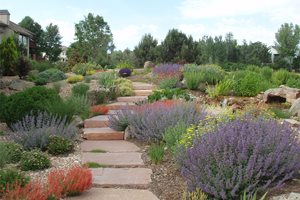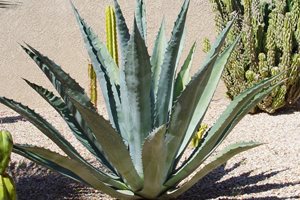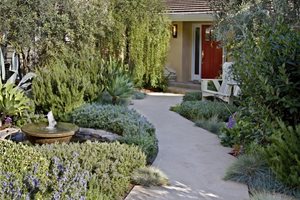Succulent Landscaping Ideas
Ten ways to incorporate succulents into your front or backyard By Maureen Gilmer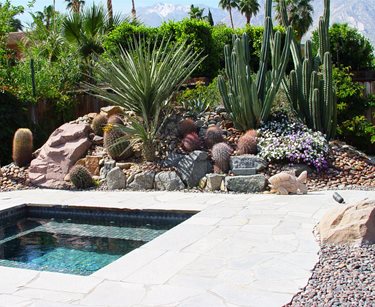
Success with succulents demands well drained soil, and in the desert foothills this site sits close to bedrock. Here is a problem solving mound that functions both as a background for the spa and a high, dry place for growing moisture sensitive native succulent desert plants. Integration of boulders helps to maintain the shape of the mound and reduce the amount of space needed to achieve such a high elevation. The application of gravel and other stones keeps the overly steep walls from eroding onto the paving.
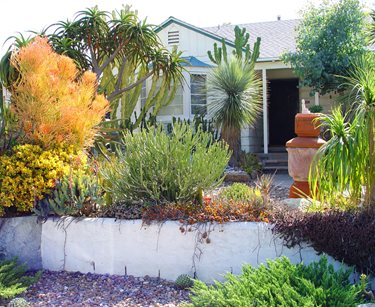
This bungalow in an old neighborhood shows how succulent plants love elevation above the surrounding ground plain. The euphorbias, aloes and firesticks provide screening from the street and traveling sedums cascade down the wall face. This is an example of a collector-style landscape where the diversity of species is more important than the whole panorama. This is popular style in coastal California where owners strive to create unique contrasts in color and form all year around.
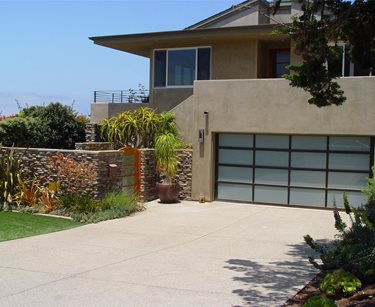
This newly remodeled home features drought resistant planting combined with specimen succulents in large pots. The large head of arborescent Aloe bainsii rises above the courtyard wall to provide visual drama against the stack-stone background. Outside a Beaucarnea with its enlarged trunk fits into this nook in the architecture where visitors can appreciate its unique shape and dangling foliage. Just two well selected and perfectly placed succulents provides this entry with the drama it deserves both in the day, and at night when creatively lighted.
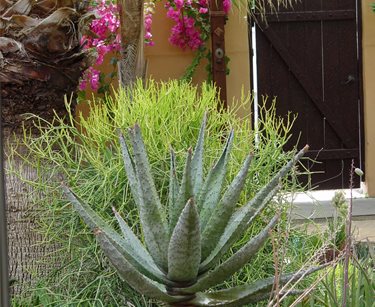
What makes succulents such incredible landscape plants is their unique forms and textures. Here an entry garden is accented with fine textured Euphorbia tirucalli which makes a light and bright background to set off the unique form of ferocious looking Aloe marlothii. Such plants provide seasonal changes from cold and bright sun, which provides red and orange highlights to the foliage. Such a low maintenance combination is far more appealing than plants that die back or shed their leaves for winter.
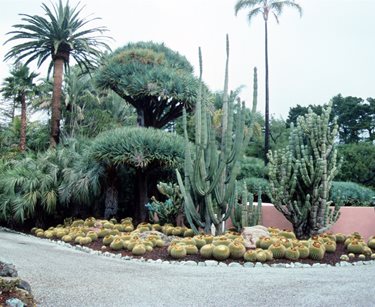
The entry to this estate features a sea of golden barrel cactus laid out in a natural drift against dark colored red-brown cinders. This is a manageable application that allows sick or dead cactus to be removed and replaced with other golden barrels of any size without any visual interruption. Contrasting with the gold coloring is blue-green Draco dracaena, the dragon tree of the Canary Islands. These rounded canopies provide striking forms for grouping with tall, gangly cacti that lack mass.
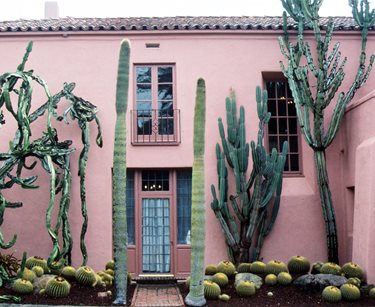
Succulent plants become far more dramatic whenever they are grown against a high contrast background. The pink coloring of this Mediterranean style home makes each cactus and euphorbia appear more like sculpture than living plants. This is key to design for large homes that require monumental specimens for instant drama. Integrating barrel cactus in the ground plane without compromising root zones of the larger plants ensures that every species in this entire composition receives the perfect amount of water without risk of rot at the soil line caused by overly wet conditions.
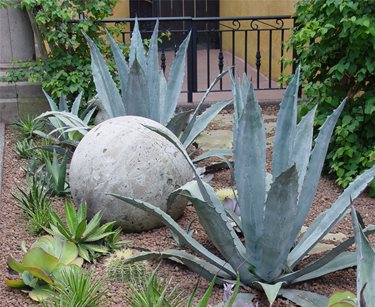
Because succulents grow to a limited size, they've become highly popular for spatially challenged urban homes. This narrow sideyard provided the perfect opportunity for a garden seen as visitors pass into the home at the side door just beyond the wrought iron railing. The design offers an excellent range of color from sapphire blue Agave americana to lavender Echeveria hybrids and the red highlights of flapjacks, Kalanchoe thyrsifolia. Integration of carved stone spheres provides a more solid mass for the focal point of the planting.
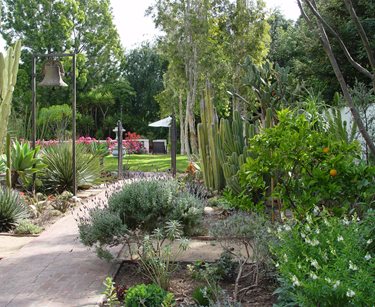
Succulent gardens are the perfect adjunct to Mediterranean style plantings. This four square garden with its brick pathways integrates citrus and Spanish lavender into the landscape of succulents with similar water demands. The square on the right side has less evaporation due to shade and the proximity of a masonry wall, so here broadleaf plants are grouped with a few succulents. Opposite, the full sun square is exclusively succulents featuring Agave attenuata, desert spoon and a tall variegated Euphorbia ingens.
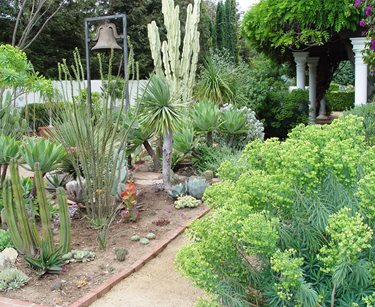
Succulent gardens are difficult to integrate into the rest of a landscape. This beautiful home features a traditional arbor covered in wisteria, which shades the outdoor living space beneath. From this sheltered location the sun drenched succulent collection may be enjoyed comfortably, with each plant appreciated for its unique color and form. A young thick stem dragon tree, rods of ocotillo, native Agave perryii plus assorted succulent seedlings in the foreground provides a feast for forms and surfaces every day of the year.
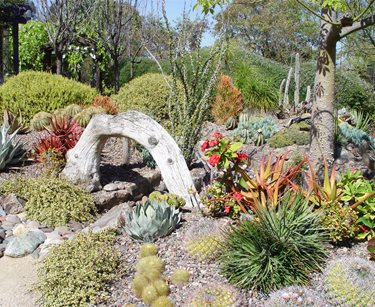
Mounded for drainage, this sloping location is perfectly tailored for cacti and succulents. The bright red aloes are colored by the winter sun and minimal water supply. Mossy looking patches of variegated Portulacaria afra spill down the sides of the drainage way that splits the space, flowing beneath this arching bit of driftwood. This is an ideal model for succulent gardens where control of water and drainage are difficult due to summer rainfall. Sufficiently porous well drained earth elevated above grade is key.

 Backyards
Backyards
 Front Yards
Front Yards
